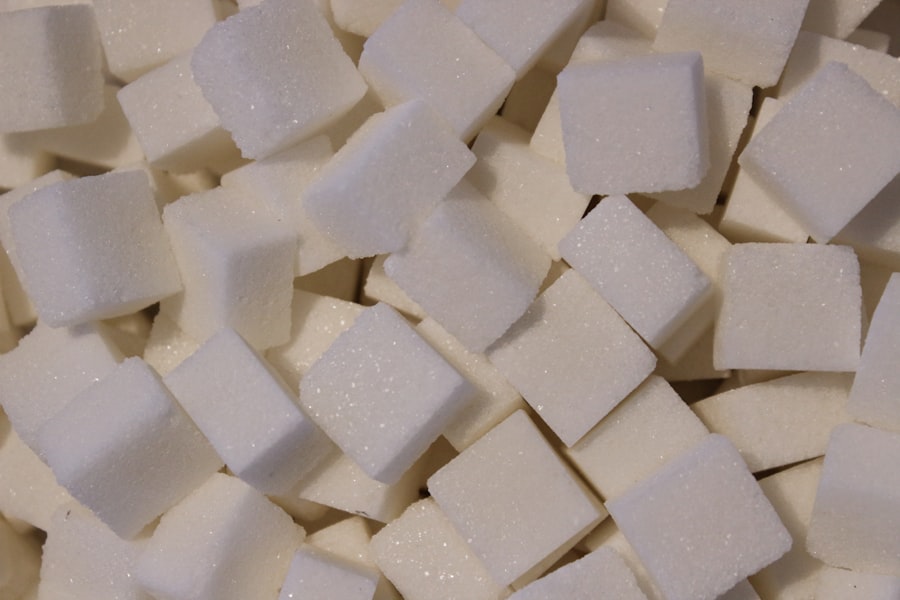In today’s world, where health consciousness is on the rise, understanding hidden sugars has become increasingly important. You may not realize it, but sugars are often lurking in your food, even in items that you might consider healthy. Hidden sugars are those added sugars that are not immediately obvious, often found in processed foods and beverages.
They can contribute to a range of health issues, including obesity, diabetes, and heart disease. By becoming aware of these hidden sugars, you can make more informed choices about what you consume. Recognizing hidden sugars requires a keen eye and a willingness to dig deeper into the ingredients of your favorite foods.
You might be surprised to learn that many products marketed as “low-fat” or “healthy” can contain significant amounts of added sugars. These sugars are often used to enhance flavor or improve texture, making it essential for you to educate yourself about what you’re eating. Understanding the prevalence of hidden sugars can empower you to take control of your diet and prioritize your health.
Key Takeaways
- Hidden sugars are often disguised under different names in food labels, making it important to understand how to identify them.
- Reading nutrition labels is crucial in identifying hidden sugars in food products, as they can be found in unexpected items such as condiments and frozen meals.
- Common names for hidden sugars include high fructose corn syrup, dextrose, and maltose, among others.
- The impact of hidden sugars on health can lead to weight gain, increased risk of chronic diseases, and negative effects on dental health.
- Hidden sugars can be found in breakfast foods, snack foods, condiments and sauces, salad dressings, frozen meals, and canned foods, making it important to be mindful of their presence in these items.
Reading Nutrition Labels
One of the most effective ways to identify hidden sugars is by reading nutrition labels carefully. When you pick up a product, take a moment to examine the ingredient list and the nutrition facts panel. The first step is to look for the total sugar content, which includes both natural and added sugars.
This information can provide you with a clearer picture of how much sugar you’re consuming in a single serving. As you read through the ingredient list, pay attention to the order in which ingredients are listed. Ingredients are typically listed from highest to lowest quantity, meaning that if sugar appears near the top, it constitutes a significant portion of the product.
You should also be aware that some products may contain multiple types of sugar, which can make it challenging to gauge the total sugar content accurately. By familiarizing yourself with how to read nutrition labels, you can make smarter choices and reduce your intake of hidden sugars.
Common Names for Hidden Sugars

Hidden sugars can go by many names, making it crucial for you to recognize them when scanning ingredient lists. Common names for added sugars include sucrose, glucose, fructose, corn syrup, and high-fructose corn syrup. These terms may not immediately signal “sugar” to you, but they all contribute to the overall sugar content of a product.
Additionally, there are less obvious names like maltodextrin and agave nectar that can also indicate the presence of hidden sugars. Understanding these various names can help you become more vigilant in your food choices. For instance, if you see “corn syrup” listed as an ingredient, you should be aware that it is a form of added sugar that can significantly increase the overall sugar content of the product.
By familiarizing yourself with these common names for hidden sugars, you can better navigate grocery store aisles and make healthier decisions for yourself and your family.
Impact of Hidden Sugars on Health
| Health Impact | Metrics |
|---|---|
| Obesity | Increased body mass index (BMI), higher risk of developing obesity-related diseases |
| Diabetes | Elevated blood sugar levels, insulin resistance, higher risk of type 2 diabetes |
| Heart Disease | Increased risk of heart disease, high blood pressure, and unhealthy cholesterol levels |
| Dental Health | Tooth decay, cavities, and gum disease |
The impact of hidden sugars on health cannot be overstated. Consuming excessive amounts of added sugars has been linked to numerous health problems, including obesity, type 2 diabetes, and cardiovascular disease. When you consume foods high in hidden sugars, your body experiences rapid spikes in blood sugar levels, leading to increased insulin production.
Over time, this can result in insulin resistance and other metabolic issues. Moreover, hidden sugars can contribute to weight gain by providing empty calories without any nutritional benefits. When you consume sugary foods, you may find yourself feeling hungry again shortly after eating because these foods do not provide lasting satiety.
This cycle can lead to overeating and poor dietary choices. By being mindful of hidden sugars in your diet, you can take proactive steps toward maintaining a healthier lifestyle and reducing your risk of chronic diseases.
Hidden Sugars in Breakfast Foods
Breakfast foods are often perceived as healthy options; however, many popular choices are laden with hidden sugars. For instance, cereals marketed as “healthy” or “whole grain” can contain significant amounts of added sugars that may not be immediately apparent. When you pour yourself a bowl of cereal in the morning, you might be surprised to discover that it contains more sugar than a candy bar.
Additionally, flavored yogurts and breakfast bars are notorious for their high sugar content. While they may seem like convenient options for busy mornings, they often contain added sugars that can derail your health goals. Instead of reaching for these sugary breakfast items, consider opting for whole foods like oatmeal or plain yogurt with fresh fruit.
By making these small changes, you can start your day on a healthier note and reduce your overall sugar intake.
Hidden Sugars in Snack Foods

When it comes to snacking, many people gravitate toward convenience over health. Unfortunately, this often leads to consuming snacks that are packed with hidden sugars. Granola bars, for example, are frequently marketed as nutritious snacks but can contain more sugar than you might expect.
Even seemingly healthy options like trail mix can have added sweeteners that contribute to their overall sugar content. You might also find hidden sugars in savory snacks like chips and crackers. Many brands add sugar to enhance flavor or improve texture without making it obvious on the packaging.
To avoid these pitfalls, consider preparing your own snacks at home using whole ingredients. Fresh fruits, vegetables with hummus, or homemade energy balls can satisfy your cravings without the added sugars found in store-bought options.
Hidden Sugars in Condiments and Sauces
Condiments and sauces are another area where hidden sugars often lurk unnoticed. Ketchup is a prime example; while it may seem harmless as a condiment for fries or burgers, many brands add significant amounts of sugar to enhance flavor.
Even salad dressings can be deceptive when it comes to sugar content. Many commercial dressings contain added sugars to balance acidity or enhance taste. If you’re not careful, you could be drenching your healthy salads in sugary sauces without realizing it.
To avoid this issue, consider making your own dressings at home using simple ingredients like olive oil, vinegar, and herbs. This way, you can control the amount of sugar and other additives in your meals.
Hidden Sugars in Salad Dressings
Salad dressings are often perceived as healthy additions to meals; however, many store-bought options are loaded with hidden sugars that can undermine your efforts to eat well. You might be surprised to find that even dressings labeled as “light” or “fat-free” often compensate for reduced fat content with added sugars to maintain flavor. This means that while you’re trying to make healthier choices, you could inadvertently be consuming more sugar than anticipated.
To make better choices when it comes to salad dressings, consider reading labels carefully or opting for homemade versions instead. A simple vinaigrette made from olive oil and vinegar can provide flavor without the unnecessary added sugars found in many commercial dressings. By taking control of what goes into your salad dressing, you can enjoy your meals without compromising your health goals.
Hidden Sugars in Frozen Meals
Frozen meals offer convenience for busy lifestyles but often come with a hidden cost: added sugars. Many frozen dinners contain sauces or flavorings that include significant amounts of sugar to enhance taste and mask the flavors of processed ingredients. When you’re pressed for time and reach for a frozen meal, it’s easy to overlook the potential sugar content lurking within.
To make healthier choices when selecting frozen meals, take the time to read labels carefully and look for options with minimal added sugars. You might also consider preparing larger batches of homemade meals and freezing them for later use. This way, you can enjoy the convenience of frozen meals while ensuring that you’re not consuming unnecessary hidden sugars.
Hidden Sugars in Canned Foods
Canned foods are another category where hidden sugars can be prevalent. While canned vegetables may seem like a healthy choice, some brands add sugar or syrup during processing to enhance flavor or preserve color. This is particularly true for canned fruits that are often packed in syrup rather than their natural juices.
When shopping for canned goods, it’s essential for you to read labels carefully and choose options without added sugars or syrups whenever possible.
Tips for Avoiding Hidden Sugars
To effectively reduce your intake of hidden sugars, consider implementing a few practical tips into your daily routine. First and foremost, make it a habit to read ingredient labels diligently before purchasing any food product. Familiarize yourself with common names for added sugars so that you can quickly identify them when shopping.
Another helpful strategy is to cook more meals at home using whole ingredients whenever possible. By preparing your own meals from scratch, you have complete control over what goes into your food and can avoid unnecessary additives like hidden sugars. Additionally, try experimenting with natural sweeteners such as honey or maple syrup in moderation when you need a touch of sweetness.
Lastly, stay informed about food trends and new products on the market that may claim to be healthier but still contain hidden sugars. By remaining vigilant and proactive about your food choices, you can successfully navigate the world of hidden sugars and prioritize your health without sacrificing flavor or enjoyment in your meals.
In recent years, the issue of hidden sugars in packaged foods has become a growing concern for health-conscious consumers. Many products that are marketed as healthy or low-fat often contain high levels of added sugars, which can contribute to a range of health problems, including obesity, diabetes, and heart disease. An insightful article on this topic can be found on Explore Senior Health, which delves into the implications of consuming these hidden sugars and offers tips on how to identify them in everyday products. For more information, you can read the full article by visiting Explore Senior Health.
WATCH THIS! 🧃The 60-Year Liver Lie: Why Your “Healthy” Juice Is Destroying Your Liver
FAQs
What are hidden sugars in packaged food?
Hidden sugars in packaged food are sugars that are added to food products during processing and are not easily recognizable by the consumer. These sugars can be listed under different names on the ingredient label, making it difficult for consumers to identify them.
Why are hidden sugars in packaged food dangerous?
Hidden sugars in packaged food can be dangerous because they can contribute to excessive calorie intake, weight gain, and an increased risk of chronic diseases such as obesity, type 2 diabetes, and heart disease. Consuming too much added sugar can also lead to dental issues and energy crashes.
How can I identify hidden sugars in packaged food?
To identify hidden sugars in packaged food, it’s important to carefully read the ingredient label. Look for terms such as sucrose, high fructose corn syrup, dextrose, fructose, maltose, and other words ending in “-ose” which indicate the presence of added sugars.
What are some common sources of hidden sugars in packaged food?
Common sources of hidden sugars in packaged food include sugary drinks, breakfast cereals, flavored yogurt, granola bars, canned fruits, salad dressings, pasta sauces, and many other processed foods. These products often contain added sugars to enhance flavor and extend shelf life.
How can I reduce my consumption of hidden sugars in packaged food?
To reduce your consumption of hidden sugars in packaged food, opt for whole, unprocessed foods whenever possible. When purchasing packaged foods, carefully read the ingredient label and choose products with little to no added sugars. Additionally, cooking and preparing meals at home allows you to have more control over the amount of sugar added to your food.
